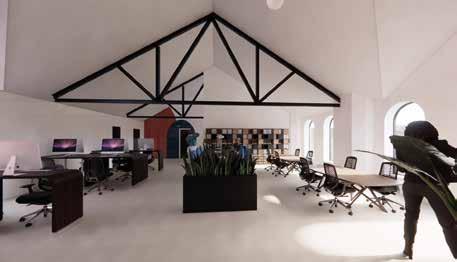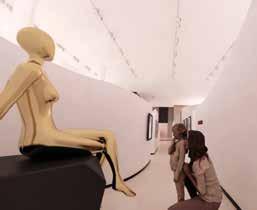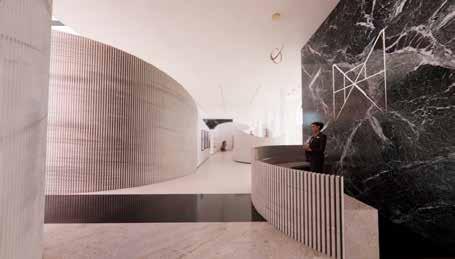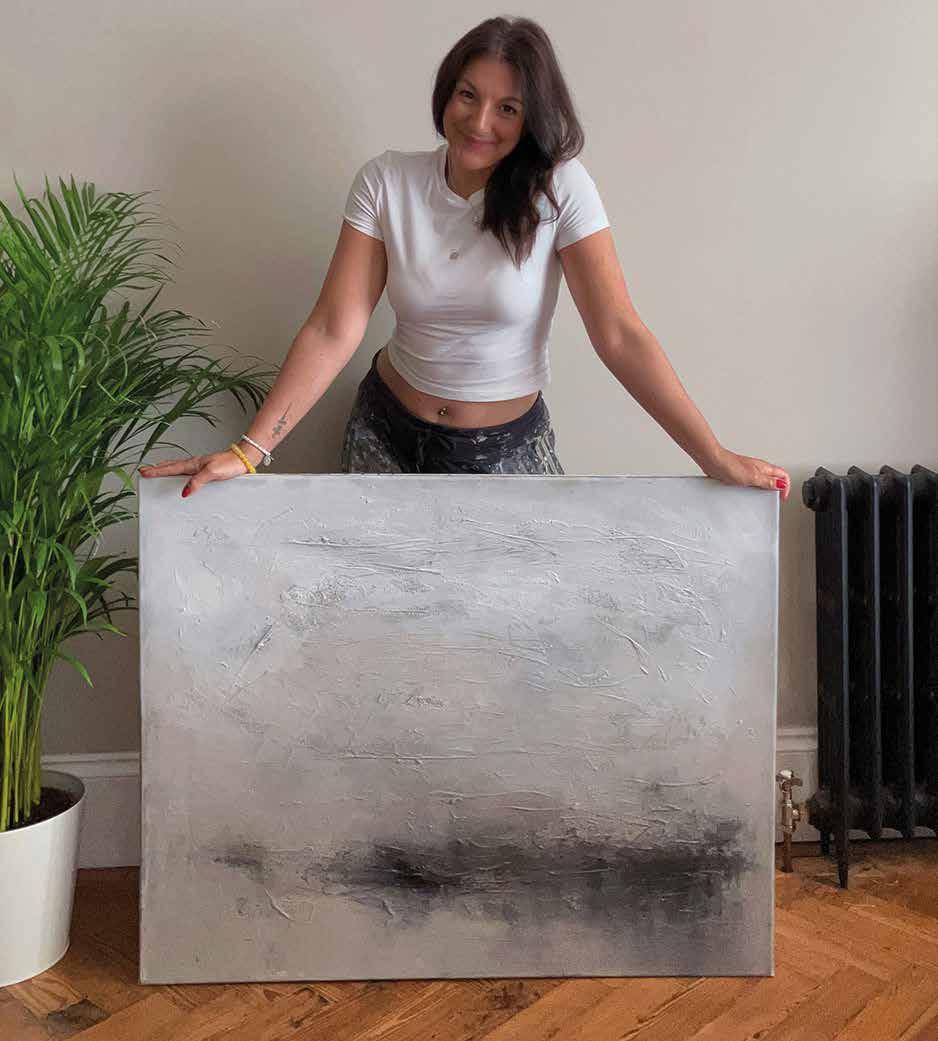
3 minute read
Future Creative
As a third-year Interior Architecture and Design student at Birmingham City University, Olajumoke Adebiyi favours modern design over quaint, farmhouse-style interiors. She uses her creative streak and globe-trotting tendencies to transform spaces as part of her BA (Hons) degree. If you’re looking for the next big thing in the interiors industry, she could be it!
Charmed By The City
Advertisement
Olajumoke, or Jummie to her friends, was born in Nigeria. She moved to London when she was four years old and adored the change of pace. There was always so much to do and be inspired by. After studying 3D design at A-level, Jummie knew that she wanted to do something creative with her life, but she didn’t know it was interior design until it was almost time to submit her UCAS forms. Her last-minute decision has worked out very well for her.
“I find it so interesting how a space can be completely transformed. Interior design can completely affect someone’s mood, and I think that is so awe-inspiring. If something is designed well, the design almost fades into the background, but at the same time, all the details are noticed.”
Jummie favours maximalist design over minimalist, using similar colour palettes in different textures and patterns to create bulk. She is also keen on Eco-Brutalism, a design theory that takes heavy industrial materials and fills them with greenery. She cites Ricardo Bofill as one of her inspirations. She also loves to check out the interiors of airports. “It’s your first impression of a country, and you’d be surprised at how much money they spend on getting that right.”
Life As An Interior Design Student
“For me, interior design is creating functional spaces for an end user in their daily lives, but with a focus on aesthetics.”
To enrol on her course, Jummie had to have three A-levels, one of which needed to be creative. She also sent in her art portfolio and believes that creativity is something that you are born with, “You need a creative eye. All the rest can be taught.”
“Now in her third and final year, her course is more hands-off. She is in university two full days a week and is given specific topics to study the rest of the time. Jummie said her first year was far more intensive, with a mixture of lectures, seminars, and workshops, often with guest lecturers.
Looking To The Future
Olajumoke believes she is still developing her signature style but leans toward contemporary designs. “There are still some aspects I’d like to incorporate, like mixing patterns and maximalism.”

She gets her inspiration from everything around her. She might see a window she likes when she is out and about and then think about how to incorporate that into her next project, for example. Her older brother is an architect, so she also bounces a lot of ideas off him. But her approach to each task is far more pragmatic.
“First, I’ll look at where the space is, how it affects what’s around it, and who uses it. Then I’ll look at things like how the sun interacts with it, what I want this space to represent, and how the user needs this space to be.

Then I’ll start to block out areas, and I’ll start designing. I find it best to work with 3D software, as it’s easier to see what’s what than with 2D software.

“I just find it so interesting how we could all have the exact same building, but each one will look totally different once we start to fill it.”

When she finishes University, she has big plans for her next step. “I want to move to Manchester. It’s such a creative city, and there’s a couple of brands there I’d love to work with. I like being in city centres, and I think it’s good to have a clean slate to start my professional life.”
And what would she say to anyone considering an interior design degree? “Go for it. There is so much diversity in design, and it’s so interesting to see everyone’s different stamp and how you are able to shape the world, almost. I think it’s definitely something that people should get into. Just make sure it is something you want to do because it’s not for the faint of heart!”
Art is essential for a well-balanced interior, but if you learn to look with your heart, it’s not only your walls that benefit.

In today’s digital world, we are bombarded with a daily cacophony of information that our brains are not designed to cope with. The more we look at, the less we see and the more disconnected we become – from others, but especially from ourselves. This serves to heighten anxiety and means our stress response is always on red alert.
Constant over-stimulation keeps our sympathetic nervous system activated. Physically, this manifests as symptoms such as elevated heart rate, high blood pressure, and a rise in blood sugar levels. Prolonged states in ‘fight or flight’ mode can lead to health problems such as heart attacks, diabetes, and other inflammatory diseases.
By designing our living spaces to provide a sanctuary away from external noise, we can give ourselves the mental capacity to switch off and self-regulate. By adding tactile furnishings and using a gentle, muted colour palette that is easy on the eye we can create a soothing environment. Keeping clutter to a minimum will







